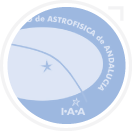NOMADs first view of the Martian atmosphere
The first element of the joint European-Russian ExoMars mission was launched on March 14th this year from Baikonur in Kazakhstan and successfully reached Mars after a journey of about 500 million kilometers on October 16th.
“I am thrilled to see the hard work of the NOMAD team successfully culminating in the first scientific data of the Martian atmosphere! This is the result of a tight international collaboration, lead and mainly financed by Belgium,” says Ann Carine Vandaele, principal investigator of the NOMAD instrument onboard ExoMars 2016 and scientist at the Royal Belgian Institute for Space Aeronomy.
The first element of the joint European-Russian ExoMars mission was launched on March 14th this year from Baikonur in Kazakhstan and successfully reached Mars after a journey of about 500 million kilometers on October 16th.
ExoMars 2016 consists of two components:
- the Trace Gas Orbiter (TGO, which hosts NOMAD)
- Schiaparelli, which was lost during landing on October 19th
The main objective of TGO is to provide the best measurements to date on the atmospheric composition of Mars, for a better understanding of the processes that are occurring on the Red Planet. NOMAD was designed and built for this purpose.
NOMAD survived the undocking of Schiaparelli and is working nominally
After the release of Schiaparelli, the TGO satellite was successfully inserted into an elliptical orbit around Mars (called Mars Capture Orbit, MCO) and is operating nominally. Each orbit lasts four and a half days, with the altitude above the surface varying from 280 km to 99,000 km.
On November 20th TGO’s instruments were turned on during two orbits to perform calibration measurements and health checks.
The figure below shows the planning of NOMAD operations for the first orbit. Besides calibrations using the Sun as light source, observations were performed by looking at the planet's surface during night and day, as well as at the illuminated limb. During MCO all three channels of NOMAD worked nominally. As the satellite passed close to Mars, two of the spectrometers were switched on and could carry out the very first observations of the Red Planet, each recording just over an hour of infrared, ultraviolet and visible spectra.
First NOMAD results from its Mars Capture Orbit
Above, NOMAD’s first infrared spectrum of the Martian atmosphere. The absorption lines seen here are due to the presence of atmospheric water. Using information like this, scientists can measure the composition, abundance and location of water and other molecules, including methane.
This will shed new light on the processes occurring in the Martian atmosphere and at the surface. These measurements are also extremely important when preparing for future robotic and even manned missions.
Above, NOMAD’s first spectrum of Mars in the ultraviolet and visible, showing the solar spectrum and atmospheric absorptions.
These measurements also show that NOMAD is working well and is ready for the long scientific mission it was built for.
What’s next?
From January till November 2017, TGO will employ aerobraking techniques to steadily lower itself to the final circular orbit at an altitude of 400 km above the Martian surface.
During the aerobraking, the TGO solar panels experience small amounts of drag from the atmosphere at very high altitudes. This will slow the spacecraft and lower its orbit. Aerobraking takes time but uses only small amount of fuel.
The TGO science mission will begin in December 2017.
The NOMAD instrument thanks its existence to the continuous support and financing by the Belgian Science Policy (Belspo) and the ESA PRODEX programme.
CONTACTAndalusian Astrophysics Institute (IAA-CSIC) |


































